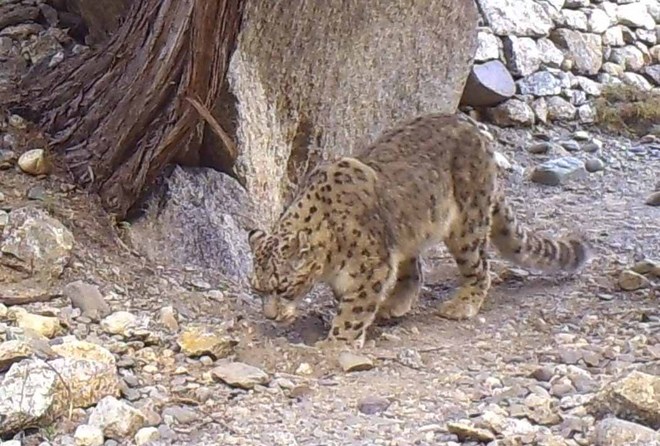
File photo of a camera-trapped image of a snow leopard at the Gangotri National Park.
Jotirmay Thapliyal
Tribune News Service
Dehradun, November 27
The higher reaches that forms a part of the habitat of snow leopards will be the worst affected due to climate change in the coming years. The state has a vast snow leopard habitat.
According to the recent report of wildlife conservationist NGO WWF, “Fragile Connections: Snow leopards, people, water and the global climate”, more than a third of its habitat in snow leopard range states across the globe could be rendered unsuitable for the endangered big cats due to the climate change. The rising temperatures could result in the tree line shifting up the mountains and farmers planting crops and grazing livestock at the higher altitudes and thereby shrinking snow leopard habitat.
Listed as endangered on the International Union for Conservation of Nature (IUCN) Red List, around 4,000 snow leopards are remaining in the wild. There are a total of 12 snow leopard range states across the state, including Afghanistan, Bhutan, China, Uzbekistan, Kazakhstan, Kyrgyz Republic, Mongolia, Nepal, Pakistan, Russia, Tajikistan and India.
Dr AK Singh, a WWF official, said rising temperature were expected to shift tree lines up the slopes. “As the snow leopard hunts in the rocky terrain above the trees, this can drastically reduce the amount of suitable territory for this highly adapted hunter, particularly in the Himalayas and Tibet,” Dr AK Singh said.
The snow leopard’s natural prey such as blue sheep is already under pressure from habitat loss and hunting. Climate change could contribute to further reductions in these species due to the replacement of grasslands by less nutritious grasses and competition from new species leaving the snow leopard at even greater risk.
The Gangotri National Park in Uttarkashi and the Nanda Devi National Park in Chamoli are some of the potential snow leopard habitats in Uttarakhand. These areas have also witnessed frequent snow leopard sightings. But with higher reaches of Uttarakhand also bearing the effects of climate change like reducing glaciers, drying streams and fast changing tree line, its repercussions could also be detrimental to snow leopards too in future.



























